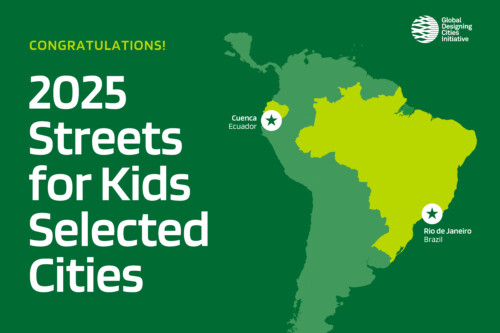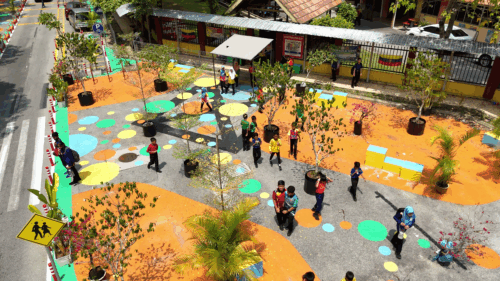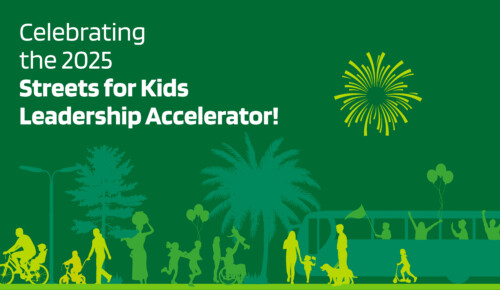Presently, transport is the greatest contributor to global carbon emissions.
That means a shift to more sustainable modes of transport is no longer a recommendation, but a necessity. To spur change, the inaugural World Sustainable Transport Day was established, falling on November 26 this year. According to the UN, “the average annual carbon emissions per person will need to drop from 6.3 tons (2020) to 2.1 tons by 2030 as recommended by experts.”
Ahead of COP28, how is the Global Designing Cities Initiative working with cities to reduce vehicle carbon emissions?
GDCI reimagines streets as public spaces. Our street design principles and methodologies, projects, and policy work support city leaders and communities to create streets for all people, providing practical, tangible, and long-term strategies and interventions to transition to carbon-free forms of transport, and encourage multimodal access and uptake.
Reclaiming space for pedestrians, cyclists, and public transit, not only creates a greener future, but walking, cycling, and shared forms of transport catalyze movement that improves physical health, fosters more social interaction to prevent isolation and poor mental health, and enables those who can’t afford a car to move around, providing the means to access education and work opportunities, as well as social and recreational activities.
To help cities design streets to encourage faster and smoother uptake of more sustainable forms of mobility, GDCI:
- Builds capacity amongst diverse sets of stakeholders to translate global best practices to their local context.
- Supports the transformation of streets—through design reviews, community engagement, and on-site implementation—to show what’s possible when we design streets that put people first.
[See our Streets for Kids projects, new cycling infrastructure initiative, our renowned road safety work, and stay tuned to learn more about our research on air quality.]
- Supports data collection, evaluation, and communication to demonstrate the impact of street transformation projects.
- Elevates the impact of projects locally, nationally, and globally to ensure permanence of pop-up and/or interim projects, creation and maintenance of citywide programs, and long-lasting policy change.
- Identifies where best practices from the Global Street Design Guide (GSDG) can be incorporated into everyday city policies, processes, design guides, and practices.
Download the Global Street Design Guide (available in eight languages), the Designing Streets for Kids guide, and our practical “How To” Manuals for free.


